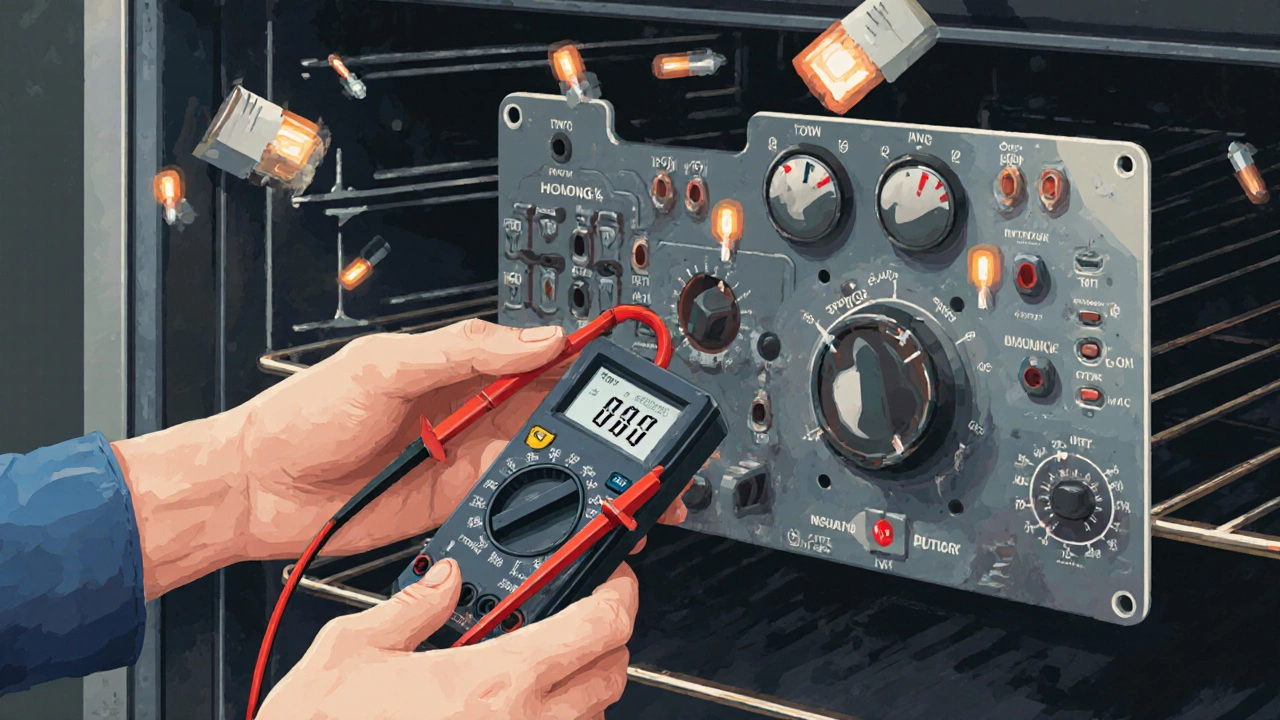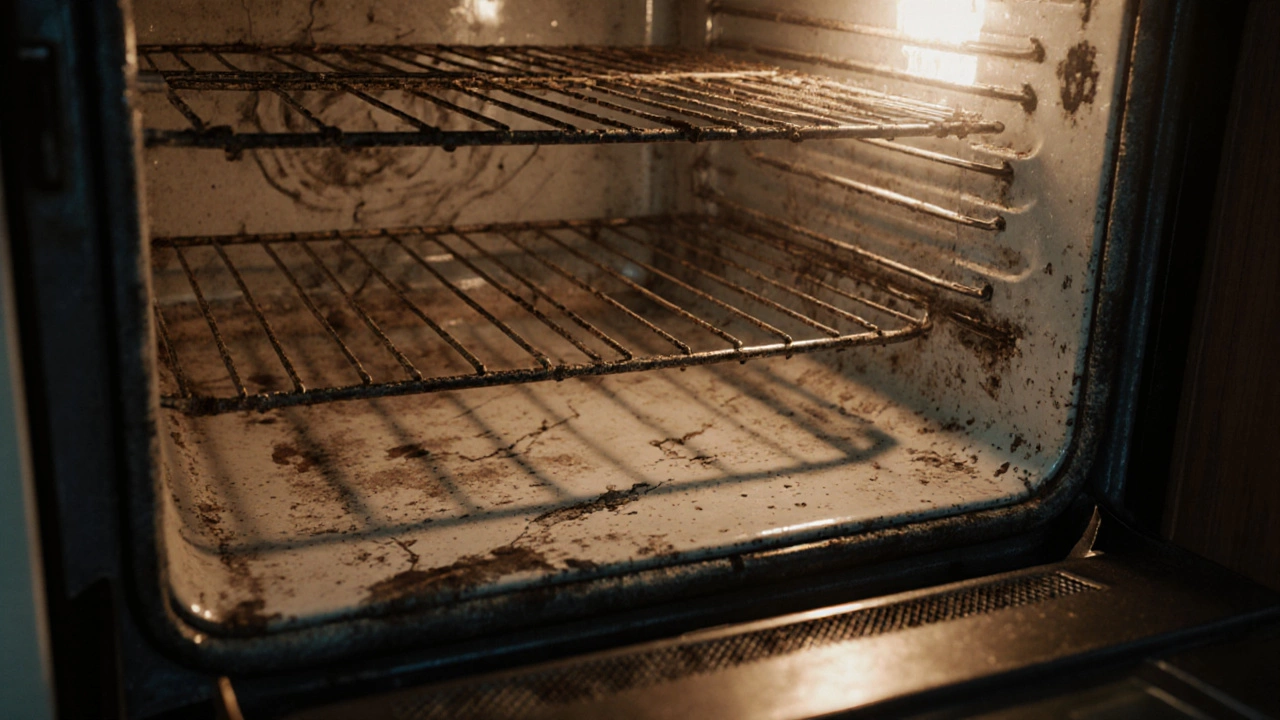Oven Replacement Calculator
Estimate whether to repair or replace your oven based on real-world factors from the article.
Results
Most people don’t think about their oven until it stops working. But if you’ve had yours for more than a decade, you’re probably wondering: is it time to replace it, or can it still be saved?
How long does an oven actually last?
The average oven lasts between 13 and 15 years. That’s the number you’ll see in most manufacturer guides and appliance lifespan studies from the National Association of Home Builders. But real-world use tells a different story. In homes where ovens are used daily - baking bread, roasting chickens, slow-cooking stews - many start showing serious wear by year 10. In lighter-use households, like those that only bake on weekends or holidays, it’s not unusual for an oven to hit 18 or even 20 years.
There’s no magic number. What matters is how it’s behaving now. If your oven heats unevenly, takes forever to preheat, or the door doesn’t seal right, those aren’t just inconveniences. They’re signs the internal components are failing. A broken heating element is cheap to fix. But if the thermostat is drifting by 30 degrees or the control board is glitching, you’re chasing symptoms, not solutions.
What kills an oven faster?
Not all ovens die of old age. Many die from neglect. Here’s what actually shortens their life:
- Spilled grease and food buildup - Over time, grease cooks onto the heating elements and insulation. That causes overheating, which fries wiring and warps internal panels.
- Using harsh cleaners - Bleach, oven sprays with lye, or abrasive scrubbers eat away at enamel coatings and damage door seals. Once the seal breaks, heat escapes, and the oven works harder to compensate.
- Overloading the racks - Dropping heavy roasting pans or stacking too many trays can bend the racks, stress the guides, and eventually crack the oven cavity walls.
- Skipping maintenance - Cleaning the vent filter, checking the door gasket, and ensuring the fan runs smoothly every six months can add years to its life.
One technician in Wellington told me he’s seen ovens from the 1990s still working fine - because the owners wiped them down after every use and never used the self-clean cycle. Others, cleaned aggressively once a year and ignored everything else, died by year 8.
Signs your oven is nearing the end
You don’t need to wait for it to stop working completely. Watch for these red flags:
- Food takes longer to cook or comes out underdone on one side - indicates uneven heat distribution, often from failing elements or poor airflow.
- The oven light flickers or turns off randomly - usually points to a failing control board or loose wiring.
- You smell burning plastic or ozone - that’s not food smoke. That’s insulation or wiring overheating.
- The door doesn’t close tightly or feels loose - a worn gasket lets heat escape, forcing the oven to run longer and harder.
- Display errors or unresponsive buttons - modern ovens with digital controls often fail here first. Repairing the board costs nearly as much as a new oven.
If you’re seeing two or more of these, it’s not a matter of if - it’s a matter of when. And when that happens, repair isn’t always the smart choice.

Repair vs. Replace: When does it make sense?
Here’s a simple rule: if the repair costs more than half the price of a new oven, walk away.
Let’s say your oven is 12 years old and the heating element needs replacing. That’s $80-$150 for parts and labor. Easy win. But if the control panel is fried? That’s $300-$500. A brand-new mid-range oven costs $600-$900. At that point, you’re paying for a 12-year-old appliance to live a few more years while you miss out on modern features like convection fans, smart sensors, or better energy ratings.
Energy efficiency matters more than you think. An oven from 2010 uses about 20% more electricity than one made in 2023. Over five years, that adds up to $150-$250 in extra power bills. Add that to repair costs, and the math gets ugly fast.
Also, consider this: newer ovens have better safety features. Auto-shutoff, child locks, and precise temperature control aren’t luxuries - they’re insurance against accidents.
What to look for in a new oven
If you’re replacing, don’t just buy the cheapest one. Focus on these three things:
- Convection fan - Moves heat evenly. Reduces cooking time by 25% and saves energy.
- Stainless steel interior - Easier to clean and more durable than enamel-coated interiors that chip over time.
- Warranty - Look for at least a 2-year full warranty. Some brands offer 5 years on the heating elements - that’s a sign they trust their build quality.
Brands like Bosch, Whirlpool, and LG have consistently high reliability scores in consumer reports. Avoid no-name brands sold at discount stores - they often cut corners on insulation and wiring, which leads to early failure.

What happens to old ovens?
Most people just leave theirs by the curb. Bad move. Ovens contain steel, copper wiring, and sometimes refrigerant in self-cleaning models. These aren’t trash - they’re recyclable.
In New Zealand, you can drop off old appliances at local council recycling centers for free. Some retailers like Harvey Norman and The Warehouse will take your old oven when you buy a new one. Don’t underestimate this step. Recycling your oven reduces landfill waste and sometimes earns you a small discount.
Bottom line: Plan ahead
Your oven isn’t a forever appliance. It’s a tool with a lifespan - like a car or a washing machine. Treat it like one. Clean it regularly. Listen to the warning signs. Don’t wait for it to die in the middle of Christmas dinner.
If your oven is over 10 years old and starting to act up, start thinking about replacement. Not because it’s broken - but because waiting makes the decision harder. A new oven isn’t a luxury. It’s a smart upgrade that saves you time, money, and stress in the long run.

I am an expert in the services industry with a focus on appliance repair. My passion lies in understanding how things work and educating others in simple, engaging ways. This enthusiasm fuels my writing, where I delve into topics around appliance maintenance and troubleshooting. I aim to make these subjects clear and accessible to all readers.